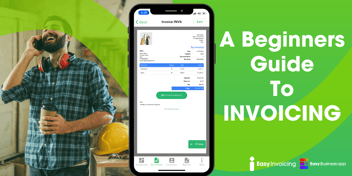6 Steps to End of Financial Year Success

There are plenty of benefits to having a plan to get organised and on top of things:
- Being organised with your paperwork will help you identify relevant tax deductions
- You’ll be able to do your income tax return sooner and receive any applicable refunds
- You’ll be meeting your compliance and reporting responsibilities
- You’ll put yourself in a great position to start the new year on the right track.
And there’s nothing like being able to relax knowing you’ve done your tax and paperwork!
1. Organise paperwork
Organising all your relevant paperwork and documentation for the financial year will save you and your accountant loads of time and hassle.
It will also provide your accountant or bookkeeper with all the relevant information they need in the one place:
Gather: The sorts of things you want to gather are records of financial transactions such as bank statements, customer invoices, purchase receipts, records of superannuation and tax payments, lease or rental agreements and business planning documents.
You should also check your personal bank account and credit card statements for expenses that might be relevant for your business.
Organise: You might find it helpful to consolidate all your information into an online cloud storage solution such as Dropbox, Google Drive or One Drive. All of these options offer a free plan, and you are able to share specific folders with your accountant or bookkeeper.
Action: here are some of things that you or your accountant may need to do as part of year end:
- Reconcile bank statements and credit cards with data held in any accounting software you/they use
- Review business sales and expenses, including large purchases like machinery or motor vehicles
- Identify any personal expenses that you can claim through your business.
Remember, getting organised saves stress, time and money. It saves you tedious back and forth with your accountant….and more deductions means less tax!
Gathering together all the relevant information may also give you some interesting insights into your business!
Now you’ve earned a coffee, we’ll see you back in 5!

2. Reconcile Payroll and Superannuation
Next up is checking payroll and superannuation. Check that your payroll reports are correct, to ensure you’ve paid your staff correctly throughout the year.
Important things to check are that the super and tax you’ve paid matches your payroll reports.
Found a mistake?
Don’t worry, you can fix this in your payroll software. But be sure to keep a record and let your accountant know as it may affect previously submitted BAS statements.
Once you’re happy with the numbers you can submit your final year end STP file. The final STP as a year end step that confirms the totals paid to each employee throughout the year. It also marks your employees as ‘tax ready’ in their myGov accounts so that they can do their individual tax returns
The good news is that this means manual employee payment summaries are no longer necessary, as it’s all handled through STP.
Check out our Final STP help guide for more on handling this process through Easy Payslip.
When by?
Your final STP file must be completed by 14 July 2021.
New 10% Super rate: Ensure you understand how your payroll software is handling the new super rate for the new year. It may be automated, or there may be a manual step you need to perform.
3. Review your Business Activity Statement - for GST registered businesses
Next up, you or your accountant will need to prepare your Business Activity Statements (BAS) for the last quarter or month. This allows you to add any extra expenses you discover when organising your paperwork, which you can claim for a GST refund.
Remember BAS includes business happenings such as; how much tax you’ve withheld from employees (PAYG withholding), your PAYG instalments and your goods and services tax (GST). All the information you need for this should be available in the documents you’ve already compiled, such as bank statements, receipts, and payroll reports.
To access your BAS head to myGov, select tax -> activity Statements -> lodge activity statement -> select view or revise to look over it.
When by?
The June quarter is due by 28 July 2021.
4. Estimate your profit or loss (if possible)
Depending on your type of business and structure, you may be able to compare any tax you’ve paid throughout the year to the total yearly tax estimate. This will give you a heads up about if you will receive a refund, or will have a tax liability.
Be sure to talk to your accountant about this to ensure you’ve got this covered and you are not hit with any unexpected tax bills. This will also help you plan your cash flow for the new financial year.
For example: you estimated your profit would be $50k and you paid PAYG instalments accordingly, but you actually make $100k. This means you have some more tax to pay. You don’t want to be out celebrating with a beer only to later find out you’ve got a surprise bill from the ATO.
But if you are organised and on top of things with your accountant, this won’t be a rude surprise, and you can plan for it. Remember to ask your accountant about when any tax payable is due.
5. End of Financial Year tax return
Okay, we have arrived at preparing your end of financial year tax return. This step may be done by you or your accountant. Even if your accountant does it, it’s helpful to understand a bit about how it works.
The main idea behind a tax return is to tell the ATO how much income your business has made, and all your business expenses that you are claiming as tax deductions. Your tax payable can then be calculated. If you’re lucky, the tax you’ve already paid may be more than the tax payable, in which case you’re entitled to a tax refund. Happy days!
If you are expecting a refund, lodge your tax return as soon as you can to give you cash to invest back into your business. Tax returns are due by 15 May 2022 if your accountant does it, or 31 October 2021 if submitting a tax return yourself.
By now you should have all your paperwork organised and in one place and you can share the information with your accountant so they can prepare your tax return. Remember, if you’re organised and save your accountant time, that saves you money!
When by?
If submitting yourself: 31 October 2021.
If your accountant is submitting: 15 May 2022.
Top tips from our CEO (an accountant!)
- Set up a system to stay organised and file your important information as it comes to you. That will make things even easier next year!
- Get all your documentation in the one place so you can easily share it with your accountant
- Work with your accountant to estimate any tax payable so you can plan your cash flow and not be short.
- If you have employees, make sure you do your final year end STP file by the 14 July 2021 so your staff can do their personal tax returns.
If you’ve made a good start on all of that, then you’ve definitely earned a beer or glass of wine (or a lovely fruit-based drink) - go you!

But once you’re done celebrating, just a tiny bit more organising will put you in great shape for the next year.
6. Goals and Organisation
Create a budget document with goals for next financial year
- If you sell products or services, review which products and clients were most profitable and which were the least. Think about how you can put more effort into the profitable activities and less into the not so profitable ones.
- Set yourself some financial goals for the new year. Make them as realistic as possible, perhaps by looking at previous years sales and expenses, and the ways you can influence them or scale your business
- Set yourself some non-financial goals. For example:
- Staying more organised with your paperwork
- Creating a better workplace vibe for your employees, e.g. more smiles, Friday drinks (COVID-permitting), a coffee machine for the office
- Plan ahead to take breaks/holidays so you don’t get burnt out and have a better work/life balance
- Learn a new skill from a colleague
Wow you made it, congrats!
If you’re still feeling a bit stuck, the ATO has a live chat service where they can assist you with any further inquiries. We hope this article has given you a better idea of what’s required of you at the EOFY and how to stay compliant.
As always, you’re welcome to email us at mailto:info@easypayslip.com or give our friendly team a call on 02 8084 9222.
.png?width=812&height=188&name=Easy-Business-app-(colour).png)
-1.png?width=352&name=Blog%20Banners%20(3)-1.png)
.png?width=352&name=Blog%20Banners%20(6).png)
